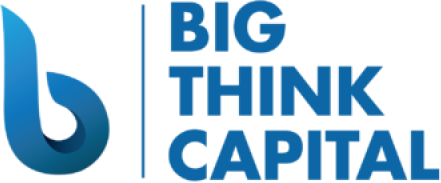Understanding and Navigating the Changing Landscape of Small Business Funding in 2025
Estimated Reading Time: 8 minutes
- Key Takeaways:
- Higher interest rates are affecting borrowing costs and investment decisions for small businesses.
- Inflation trends are escalating operating costs, prompting businesses to adapt quickly.
- Merchant cash advances (MCAs) offer flexible funding alternatives amidst economic uncertainty.
- Strategies for financial resilience are essential in navigating today’s economic landscape.
Table of Contents
- The Current State of Fed Interest Rate Changes in 2025
- Inflation Trends in 2025
- Strategies for Navigating the Economic Landscape
- Understanding MCA in 2025
- Pros and Cons of MCA
- How to Choose a Suitable MCA Provider
- How to Effectively Utilize Your MCA
- Conclusion
- FAQ
The Current State of Fed Interest Rate Changes in 2025
As of 2025, the Federal Reserve has implemented a series of interest rate hikes aimed at controlling inflation. The latest Fed interest rate stands at 5.5%, a substantial increase from the historically low rates seen during the pandemic. According to the Federal Reserve’s data, raised borrowing costs are a strategic move to mitigate inflation, which has hovered around 5% annually.
Impact of Interest Rates on Small Businesses
The implications of these interest rate changes resonate across the financial landscape, directly affecting small businesses in various ways:
- Cost of Borrowing: Higher interest rates translate to increased costs for loans and credit. Small businesses relying on traditional bank loans may find themselves facing higher monthly repayments, which can strain cash flow and operational budgets.
- Investment Decisions: With higher costs associated with borrowing funds, many small business owners may delay or reconsider expansion plans, equipment purchases, or hiring new employees.
- Cash Flow Management: As credit becomes more expensive, businesses may need to improve their cash flow management strategies to navigate fluctuating interest rates and ensure they can meet financial obligations.
Inflation Trends in 2025
Inflation continues to shape the business climate in 2025, with consumer prices rising steadily. According to the Bureau of Labor Statistics, inflation rose by 5% in early 2025, a concerning trend for business owners. The various facets of inflation can impact small businesses in the following ways:
- Increased Operating Costs: Rising prices for raw materials, labor, and logistics mean that sustaining profit margins is becoming more challenging. Business owners must adjust their pricing strategies accordingly.
- Consumer Spending Habits: Higher inflation often leads consumers to tighten their budgets, which can reduce demand for non-essential goods and services. Small businesses need to adapt their offerings and marketing strategies to meet changing consumer needs.
- Access to Capital: As inflation affects interest rates, accessing affordable financing can become more challenging. Small businesses may need to rely on alternative funding options, such as merchant cash advances, to navigate this financial tightrope.
Strategies for Navigating the Economic Landscape
In light of these economic pressures, small businesses must devise strategies to thrive despite rising interest rates and inflation. Here are three practical takeaways:
- Enhance Financial Resilience: Streamlining operations and cutting unnecessary expenses can help maintain cash flow. Furthermore, consider diversifying income streams to make your business less vulnerable to economic fluctuations.
- Explore Alternative Financing Options: With traditional loans becoming pricier, alternative funding solutions like merchant cash advances can provide quick access to capital without the lengthy approval processes characteristic of banks.
- Stay Informed: Regularly monitor economic indicators and stay updated on Fed announcements. This vigilance will equip you to make informed decisions about when to borrow, invest, or hold off on financial commitments.
Understanding MCA in 2025
Merchant cash advances have emerged as a viable solution for small businesses needing quick access to cash. Unlike traditional loans, MCAs provide business owners with upfront capital in exchange for a percentage of future credit card sales or daily bank deposits. This flexible repayment structure makes MCAs particularly attractive for small businesses, especially during economic uncertainty.
Pros and Cons of MCA
When considering merchant cash advances, it’s essential to weigh the advantages and disadvantages.
Pros:
- Rapid Access to Capital: Unlike traditional lenders, MCA providers can approve funding in as little as 24 hours.
- Flexible Repayment: Since repayment is based on daily sales, cash-strapped businesses can manage their finances more effectively.
- Fewer Requirements: MCAs typically require less documentation than conventional loans, making them accessible to businesses with limited credit histories.
Cons:
- Higher Costs: MCAs often come with significantly higher fees than traditional loans, which can impact your business’s bottom line.
- Variable Payment Schedule: Payments fluctuate based on sales volume, which may pose challenges during slower business periods.
- Potential Debt Cycle: If not managed effectively, businesses might find themselves in a cycle of borrowing to repay prior advances.
How to Choose a Suitable MCA Provider
Selecting the right merchant cash advance provider is critical to maximizing benefits while minimizing risks. Here are steps to guide you:
- Research Providers: Look for established and reputable MCA providers. Read reviews and testimonials to gauge their reliability and customer service.
- Understand the Terms: Carefully scrutinize the terms of service, including fees, repayment schedules, and any hidden charges. Knowledge of these details can prevent unexpected financial strain later on.
- Compare Options: Don’t hesitate to shop around for the best deals. Different providers may offer varying terms, so compare them to find one that aligns best with your business needs.
How to Effectively Utilize Your MCA
Once secured, it is crucial to use your merchant cash advance effectively. Here are strategies to maximize your MCA funding:
- Budget Wisely: Allocate the funds for specific expenditures that will create immediate returns, such as inventory, marketing campaigns, or equipment essential for your operations.
- Monitor Cash Flow: Keep close tabs on your daily sales to ensure you can meet repayment obligations without jeopardizing your operating budget.
- Invest in Growth: Consider using the MCA to seize growth opportunities, such as expanding your product line or targeting new customer segments, which can provide a solid return on investment.
Conclusion
The evolving landscape of small business financing in 2025 presents both challenges and opportunities. Understanding Fed interest rates, inflation trends, and effective financing solutions like merchant cash advances is crucial for business owners navigating this dynamic economy. By staying informed, exploring diverse funding options, and implementing strategies to manage costs, you can position your small business for success in an uncertain financial future.
To learn more about how Big Think Capital can help you find the right funding solutions to suit your needs, visit us at bigthinkcapital.com or speak with one of our funding experts today. Let us support you in navigating the avenues of small business financing effectively.
FAQ
What is a merchant cash advance?
A merchant cash advance (MCA) is a financing option that provides business owners with upfront capital in exchange for a percentage of future credit card sales or daily bank deposits.
How quickly can I get an MCA?
Many MCA providers can approve and fund your application in as little as 24 hours, depending on the provider’s policies.
Are MCAs a good option for all businesses?
While MCAs offer quick access to capital, they may not be suitable for all businesses, especially those sensitive to high repayment costs associated with them.
What should I consider when choosing an MCA provider?
Consider the provider’s reputation, the terms of service, fees, and repayment schedules to ensure you choose the best option for your business needs.






